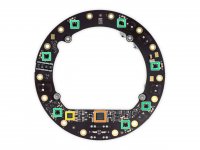How many DSP channels, DACs, ADCs for the sensing microphones, and amplifiers are we talking about here?
How did they get it all inside that package?
Any idea about the chips used (other than the A8)?
Just a clean power supply for this thing sounds like a challenge.
individually amplified - so 8 amps, DSP channels and so on.
Having actually reviewed the data - there is little evidence the ground plane was intended in the design
Trolling patents a bit more deeply, looks like they account for the boundary:
Suzanne Hardy Inventions, Patents and Patent Applications - Justia Patents Search
From whatever I can tell by having moved the thing all over, and into the worst spots I could find for a loudspeaker, they not only have accounted for the plane, but also the on-the-fly rebalancing too. Sounds as good at 6" from a wall, as it does at 60" -- after it does it's recalibration, which takes a minute or so, guessing. I could hear no benefit in mounting it on a base that fit only the diameter of the center base plate, about 24" off the floor, versus placing it on a 12" plane 24" off the floor, or versus a 36" x 120" kitchen island countertop.
From th etake apart video where the guy used an axe to get at parts of it, the tweeters look to be a variation of the Apple eBall (DIY2000) originally made by JBL/Harmon for the 3rd generation iMac and later by Foster for the eMac (a slightly larger one). An edge driven concave aluminum cone.
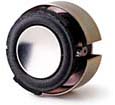
dave

dave
Yeah I was a little bummed by that. I have a bunch of BMRs and I need an excuse to use them.
But there's a couple of upsides:
1) iirc, Don Keele used these drivers in one of his early CBTs, so they can't be half bad
2) Last I checked, they're readily available on eBay because there's so many out there. I bought about eight for something like ten bucks a few years back.
But there's a couple of upsides:
1) iirc, Don Keele used these drivers in one of his early CBTs, so they can't be half bad
2) Last I checked, they're readily available on eBay because there's so many out there. I bought about eight for something like ten bucks a few years back.
ilkless comments on Apple HomePod - The Audiophile Perspective + Measurements!
In the interest of full disclosure, heated debate over the use of 1/12 measurements and the final verdict broke out. As one of the users the review writer consulted I outline my reasoning for endorsing these measurements (even as a keen Toole/Olive proponent) and sum up the characteristics of the DSP based on the measurements, speaker auto-calibration method and Apple's previous comments + video demonstrations.
In the interest of full disclosure, heated debate over the use of 1/12 measurements and the final verdict broke out. As one of the users the review writer consulted I outline my reasoning for endorsing these measurements (even as a keen Toole/Olive proponent) and sum up the characteristics of the DSP based on the measurements, speaker auto-calibration method and Apple's previous comments + video demonstrations.
Limited presentation of date, but another data point never the less.
Apple’s Biggest Claim About HomePod Is Legit, According To Our Acousti
dave
Apple’s Biggest Claim About HomePod Is Legit, According To Our Acousti
dave
I have 5 of these now. 2 stereo pairs and 1 single unit. Also a stereo pair of HomePod minis. It’s really nifty how 7 tweeter “slices” all join together in a circle and fire downwards through a circular waveguide.. Why hasn’t another speaker maker thought of or produced this? Also each tweeter has its own amplifier. I’ve done a full proper disassembly on MacRumors and iFixit. I also used my old Dayton Audio DATS v2 to measure the T/S parameters of the woofer and tweeter. HomePod doesn’t sound as filling as say my Boston VR-M90 or Ohm C2 or any other large speaker, it does sound larger than what it physically is. I find that I use these more than my regular stereo these days due to confidence and sounding great. Very clever that it used microphones to automatically tune itself. It even has a microphone for the bass to ensure it doesn’t over drive the woofer and distort.
I would have thought that actual speaker manufactures would have thought of Apple’s design first. Imagine making small “bookshelf” speakers the size of HomePod with 7 tweeters and a upwards firing woofer. I have a parts unit that I could mess with.
Could those tweeters be wired in series or series-parallel with a proper crossover and used with the woofer (with a crossover) and driven by a regular amp? Pretty much means gutting out the active electronics (power supply, amplifier board, microphones, etc)
I would have thought that actual speaker manufactures would have thought of Apple’s design first. Imagine making small “bookshelf” speakers the size of HomePod with 7 tweeters and a upwards firing woofer. I have a parts unit that I could mess with.
Could those tweeters be wired in series or series-parallel with a proper crossover and used with the woofer (with a crossover) and driven by a regular amp? Pretty much means gutting out the active electronics (power supply, amplifier board, microphones, etc)
Last edited by a moderator:
What I find curious, when you do beam steering, why do you then need all-around drivers? The nice thing with beam steering is precisely that you do NOT need all-around drivers.
Is this a marketing issue, because customers wouldn't understand the concept but would see the beautiful arrays?
Jan
Is this a marketing issue, because customers wouldn't understand the concept but would see the beautiful arrays?
Jan
Not sure what happened, but I guess those photo didn't upload. 
Here we are. Also interesting how the amplifier board (circular board) is screwed directly to the 7 tweeters eliminating the need for wires. Each tweeter has it's own Analog Devices SSM35158 amplifier. The 4" woofer is driven by the International Rectifier PowlRaudio 98-0431
Here we are. Also interesting how the amplifier board (circular board) is screwed directly to the 7 tweeters eliminating the need for wires. Each tweeter has it's own Analog Devices SSM35158 amplifier. The 4" woofer is driven by the International Rectifier PowlRaudio 98-0431
Attachments
-
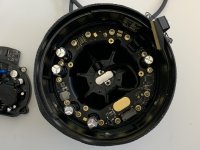 IMG_0672.jpg622.7 KB · Views: 254
IMG_0672.jpg622.7 KB · Views: 254 -
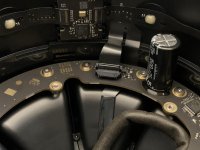 IMG_0673.jpg881.1 KB · Views: 244
IMG_0673.jpg881.1 KB · Views: 244 -
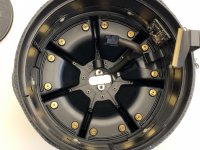 IMG_0683.jpg848.4 KB · Views: 246
IMG_0683.jpg848.4 KB · Views: 246 -
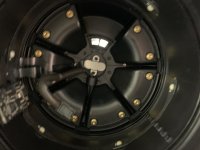 IMG_0692.jpg947.5 KB · Views: 231
IMG_0692.jpg947.5 KB · Views: 231 -
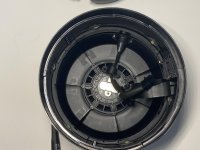 IMG_0441.jpg773.7 KB · Views: 106
IMG_0441.jpg773.7 KB · Views: 106 -
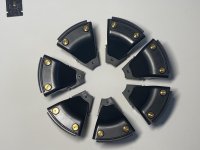 IMG_0440.jpg673.7 KB · Views: 251
IMG_0440.jpg673.7 KB · Views: 251 -
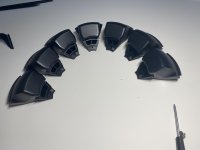 IMG_0444.jpg486.9 KB · Views: 119
IMG_0444.jpg486.9 KB · Views: 119 -
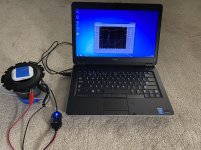 IMG_0277.jpg1.1 MB · Views: 127
IMG_0277.jpg1.1 MB · Views: 127 -
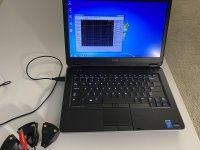 IMG_0279.jpg903 KB · Views: 107
IMG_0279.jpg903 KB · Views: 107 -
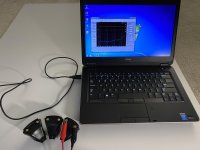 IMG_0280.jpg877.6 KB · Views: 91
IMG_0280.jpg877.6 KB · Views: 91
Last edited:
What I find curious, when you do beam steering, why do you then need all-around drivers? The nice thing with beam steering is precisely that you do NOT need all-around drivers.
Is this a marketing issue, because customers wouldn't understand the concept but would see the beautiful arrays?
Jan
Apple does a lot of processing to determine how much of the signal goes where. Even when the HomePod knows to direct most of the sound in a particular direction it will still direct some of the sound to the rear and sides in response to room echo and phase effects. It is how it is able to sound so much bigger than expected. It is also how it is able to produce a much larger soundstage than would be expected.
To really understand everything the array can do you need to pair a pair of HomePods up a 4k AppleTV. The array manages to do an incredible job of replicating surround sound just with the 2 units by the TV. This also can tell you why stripping out the electronics and running the drivers through a regular crossover doesn’t make much sense. The processing, steering, and distortion correction is what makes them sound so good.
Over here, I described some patents which look like they were filed for HomePod 2.0:
https://www.diyaudio.com/forums/mul...-phase-plugs-coentrant-horns.html#post6501382
Looks like it might not happen:
HomePod mini yes, HomePod 2 no, says reliable leaker - 9to5Mac
In a nutshell, it looks like sales of HomePod 1.0 were underwhelming. There were some reviews on Reddit where people said that Costco was selling them for half price ($149!)
It's a bummer that it's so hard to get normal people to appreciate good sound. About eight years ago I bought a pile of JBL "Control Now" speakers because Costco was blowing them out for something like 75% off. At that price, even if you just kept the drivers and the crossover it was worth the price.
The issue with the JBLs, I think, is that they don't sound right unless you mount them right, and nearly everyone won't mount them right, including me.
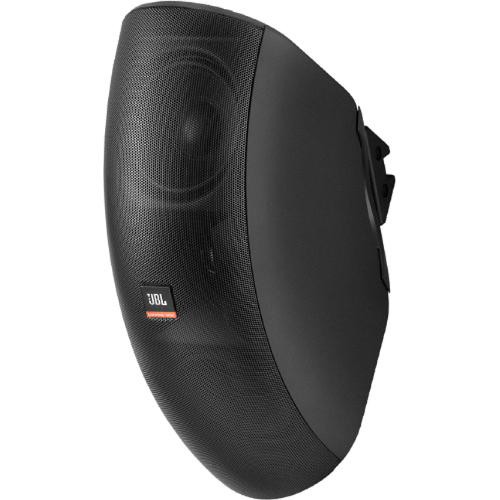
Here's how they look, mounted correctly
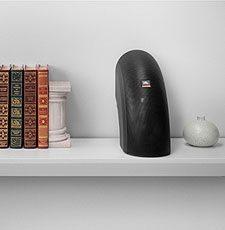
Here's how everyone sets them up. And I'm guilty of this too. Basically if you set them up this way, the listening axis is pointed at the ceiling :O
I have a feeling the HomePod suffers from similar challenges, basically it needs to be at ear level, like most speakers do. But I'll bet a lot of people place it on a table, where it's too low. Tweeters shouldn't be at kneecap level.
https://www.diyaudio.com/forums/mul...-phase-plugs-coentrant-horns.html#post6501382
Looks like it might not happen:
HomePod mini yes, HomePod 2 no, says reliable leaker - 9to5Mac
In a nutshell, it looks like sales of HomePod 1.0 were underwhelming. There were some reviews on Reddit where people said that Costco was selling them for half price ($149!)
It's a bummer that it's so hard to get normal people to appreciate good sound. About eight years ago I bought a pile of JBL "Control Now" speakers because Costco was blowing them out for something like 75% off. At that price, even if you just kept the drivers and the crossover it was worth the price.
The issue with the JBLs, I think, is that they don't sound right unless you mount them right, and nearly everyone won't mount them right, including me.

Here's how they look, mounted correctly

Here's how everyone sets them up. And I'm guilty of this too. Basically if you set them up this way, the listening axis is pointed at the ceiling :O
I have a feeling the HomePod suffers from similar challenges, basically it needs to be at ear level, like most speakers do. But I'll bet a lot of people place it on a table, where it's too low. Tweeters shouldn't be at kneecap level.
Apple does a lot of processing to determine how much of the signal goes where. Even when the HomePod knows to direct most of the sound in a particular direction it will still direct some of the sound to the rear and sides in response to room echo and phase effects. It is how it is able to sound so much bigger than expected. It is also how it is able to produce a much larger soundstage than would be expected.
To really understand everything the array can do you need to pair a pair of HomePods up a 4k AppleTV. The array manages to do an incredible job of replicating surround sound just with the 2 units by the TV. This also can tell you why stripping out the electronics and running the drivers through a regular crossover doesn’t make much sense. The processing, steering, and distortion correction is what makes them sound so good.
I understand all that. My point is that all of this can be done with beam steering. No need to all-around drivers.
Jan
I understand all that. My point is that all of this can be done with beam steering. No need to all-around drivers.
Jan
How can you steer sound behind the main soundstage without drivers pointing in all directions? That's the point of the circular array, it can project sound in any direction to maximize reverb and other phase effects. Having the circular array with matching circular mics also allows the speaker to be put in almost any position without the user having to aim or adjust the speakers.
Pretty sure the reason for 7 tweeters and 7 independent amplifiers is so the DSP can adjust the level of each tweeter based on what it hears via 6 microphones to create the soundstage. Not sure how else you could do that. It also has a 7th microphone on a small PCB. This microphone listens to the output of the woofer to make sure it doesn’t distort.HomePod Teardown - iFixit
So while I suppose making a crossover and joining the 7 tweeters in series or series-parallel would not yield anything close to what the active electronics accomplish, I’d still be curious. I realize Apple has much more money so sink into these products than Bose or JBL for example, but I am surprised no company has fabricated a custom tweeter horn like how apple has done. Most manufactures stick with conventional designs.
So while I suppose making a crossover and joining the 7 tweeters in series or series-parallel would not yield anything close to what the active electronics accomplish, I’d still be curious. I realize Apple has much more money so sink into these products than Bose or JBL for example, but I am surprised no company has fabricated a custom tweeter horn like how apple has done. Most manufactures stick with conventional designs.
- Home
- Loudspeakers
- Multi-Way
- John Sheerin got Apple to use horns!
